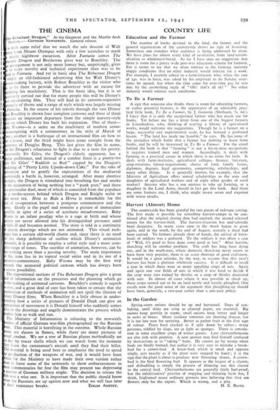Harvest (Almost) Home The countryside has been grateful for two
pieces of red-tape cutting. The first made it possible for schoolboy harvest-camps to be con- tinued after the original closing date had expired; the second released troops for the harvest-field. The harvest-situation has undoubtedly been desperate. In many cases corn in the shock began to grow again, and in the south, by the end of August, scarcely a sheaf had been carried. To farmers already short of hands, the arrival of lorry- loads of soldiers was a godsend. To the soldiers it was often a case of "Well, it's good to have done some good at last." After harvest, thatching will be another problem. The craft has long been dying out, and in the south-east, where domestic thatching never seems to have been very popular, there is an acute shortage of good craftsmen. It would be a great mistake, by the way, to assume that this year's harvest has been a glorious wholesale success. It is difficult to recall a year in which there were so many appalling crops of oats. Again and again one saw fields of oats in which it was hard to decide if the crop were oats ruined by thistles or a crop of thistles decorated with oats. In almost all cases where it was possible to check up, these crops turned out to be on land newly and hastily ploughed. One recalls now the good sense of the argument that ploughing-up should have been, generally, a two-year rather than a one-year policy.


























 Previous page
Previous page